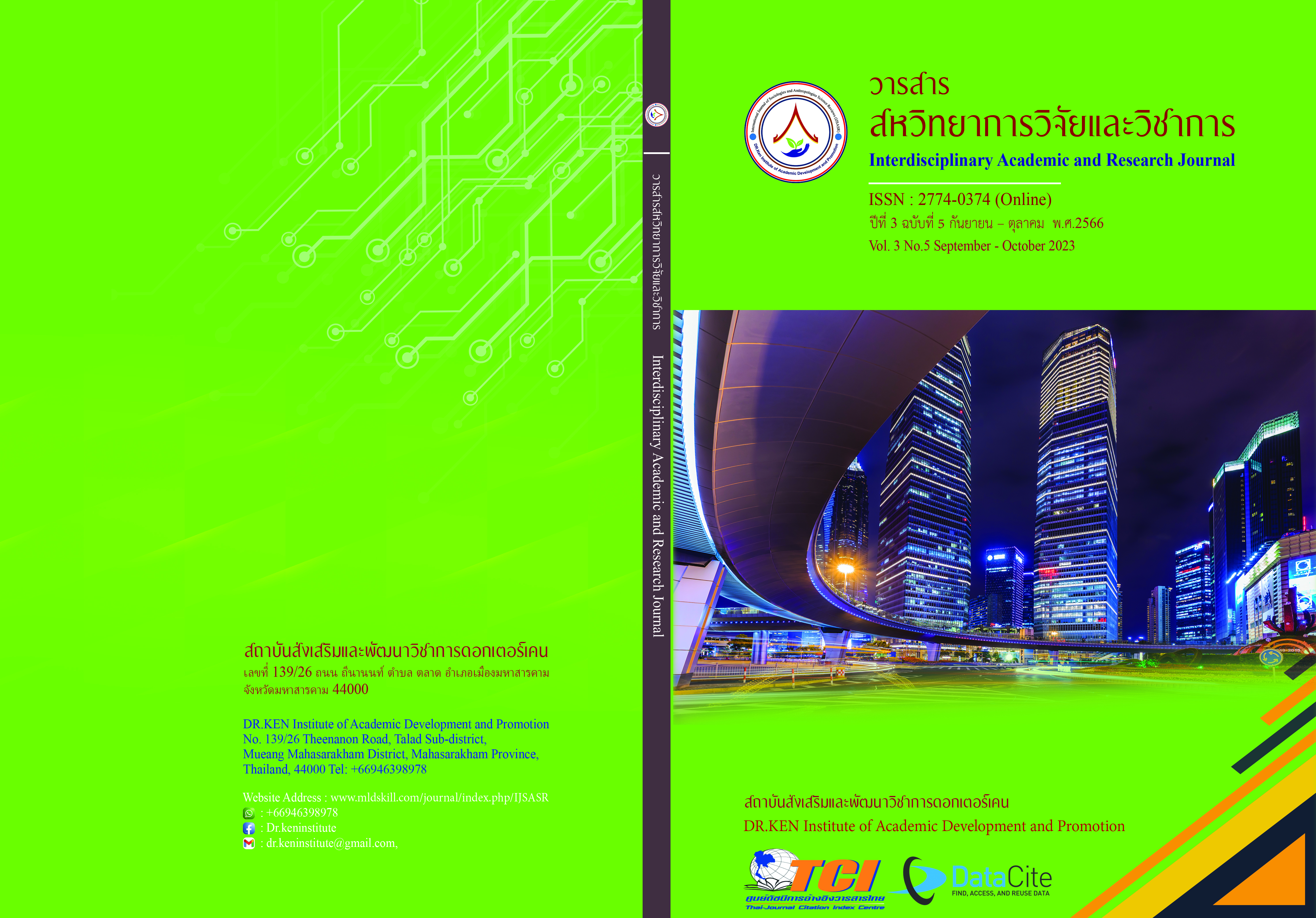Guidelines for Developing Mathematical Understanding and Representation of Fractional Problem-Solving Abilities of Grade Seven Students
DOI:
https://doi.org/10.14456/iarj.2023.240Keywords:
Mathematical Understanding; , Mathematical Representation; , Mathematical Problem Solving; , Public MediaAbstract
Mathematical Understanding is the ability to translate, interpret, and create links between ideas, facts, and mathematical processes to the point of being able to relate existing knowledge to new situations so that problems can be solved. Thus, this research aims (1) to examine the understanding of math and representations for solving fractions problems, 2) to compare the understanding of math and representations for solving fractions problems classified by sex and intelligence level, and 3) to study ways to develop mathematical understanding and representation The sample was seventh students’ grade at Sarakham Pittayakom School. A total of 210 students. The research instruments were: 1) understanding of mathematics test, 2) representation of mathematics test, 3) problem-solving test, and 4) interview form. The statistics used in the research were frequency, percentage, mean, and standard deviation. Multiple variance analysis using a case study method writing analysis and presented by descriptive and analytical methods. The results of the research revealed that (1) mathematical understanding. of students with a high level of intelligence, level 2 Image Making The mathematical representation of students with a high level of intelligence is the use of symbols. solve mathematical problems about fractions had a high level of intelligence. Sorted by the highest mean score, which is understanding the problem devising a plan carrying out the plan, and looking back, respectively. (2) mathematical understanding and a representation of the student's ability to solve fraction problems by level of intelligence The difference was statistically significant at the .05 level. And (3) Guidelines for developing mathematical understanding and representation of fractional problem-solving abilities is that the teacher must show students how to do a variety of things in a single problem. Use of media or equipment to manage classes Teaching fractions Teachers must explain how to do this in detail and clearly, along with examining the answers and how to summarize them.
References
สถาบันส่งเสริมการสอนวิทยาศาสตร์และเทคโนโลยี. (2550). การวัดประเมินผลเพื่อคุณภาพ การเรียนรู้และตัวอย่างข้อสอบจากโครงการประเมินผลนักเรียนนานาชาติ (PISA). กรุงเทพฯ: เซเว่นพริ้นติ้งกรุ๊ป.
อภิญญา สุรเสน. (2555). การพัฒนาสติปัญญาโดยใช้กิจกรรมศิลปะสร้างสรรค์ด้วยวัสดุในท้องถิ่นตามแนวคิดพหุปัญญาของเด็กปฐมวัย. วิทยานิพนธ์ปริญญาการศึกษามหาบัณฑิตมหาสารคาม : มหาวิทยาลัยมหาสารคาม.
Goldin, A. G., & Janvier, C. (1998). Representations and Psychology of Mathematics Education (Electronic version]. Journal of Mathematical Behavior, 17(1), 1-4
Goldin, G.A., & Kaput, J.J. (1996). A joint perspective on the idea of representation in Learning and doing mathematics. In L. P. Steffe & P. Nesher (Eds.), Theories of Mathematical learning (pp.397-430). Mahwah, NJ: Erlbaum Associates.
Hiebert, J. (1990). The role of routine procedures in the development of mathematical competence. In T. J. Cooney (Ed.), Teaching and learning mathematics in the 1990s: 1990 yearbook (pp. 31-40). Reston, VA: National Council of Teachers of Mathematics
Kaput, J.J. (1991). Notations and representations as mediators of constructive processes. In E. von Glasersfeld (Ed.), Radical Constructivism in Mathematics Education Netherlands: Kluwer Academic Publishing.
Lesh, R., (1979). Mathematical learning disabilities: considerations for identification, diagnosis, and remediation, Applied Mathematical Problem Solving. Ohio: ERIC/SMEAC
National Council of Teachers of Mathematics. (1980). An agenda for action. Rston, VA: NCTM.
National Council of Teachers of Mathematics. (1989). Curriculum and evaluation standards for school mathematics.VA: NCTM
National Council of Teachers of Mathematics. (2002). Principle and standards for school mathematics. Reston, VA: NCTM.
Pirie, S., & Kieren, T. (1994). Beyond metaphor: Formalising in mathematical understanding within constructivist environments. For the Learning of Mathematics. 14(1), 39-43
Polya, G., (1957). How to Solve it. Garden City, New York: Double Anchor Book
Santoro, A.M. (2004). The Academic Value of Hands-on Craft Project in School, New York
Tsuji, H. (2007). What kind of Teaching Materials and Aids are Used in Japan? Japanese Lesson Study in Mathematics: Its Impact, Diversity and Potential for Educational Improvement. Japanese: World Scientific Publishing Co. Pte.
Wilson, J.W. (1971). Evaluation of Learning and Summative Evaluation of Student Learning. New York: McGraw-Hill.
Downloads
Published
How to Cite
Issue
Section
License
Copyright (c) 2023 Chusak Chubthaisong, Ramnaree Nontapa

This work is licensed under a Creative Commons Attribution-NonCommercial-NoDerivatives 4.0 International License.
Copyright on any article in the Interdisciplinary Academic and Research Journal is retained by the author(s) under the under the Creative Commons Attribution-NonCommercial-NoDerivatives 4.0 International License. Permission to use text, content, images, etc. of publication. Any user to read, download, copy, distribute, print, search, or link to the full texts of articles, crawl them for indexing, pass them as data to software, or use them for any other lawful purpose. But do not use it for commercial use or with the intent to benefit any business.
















.png)


